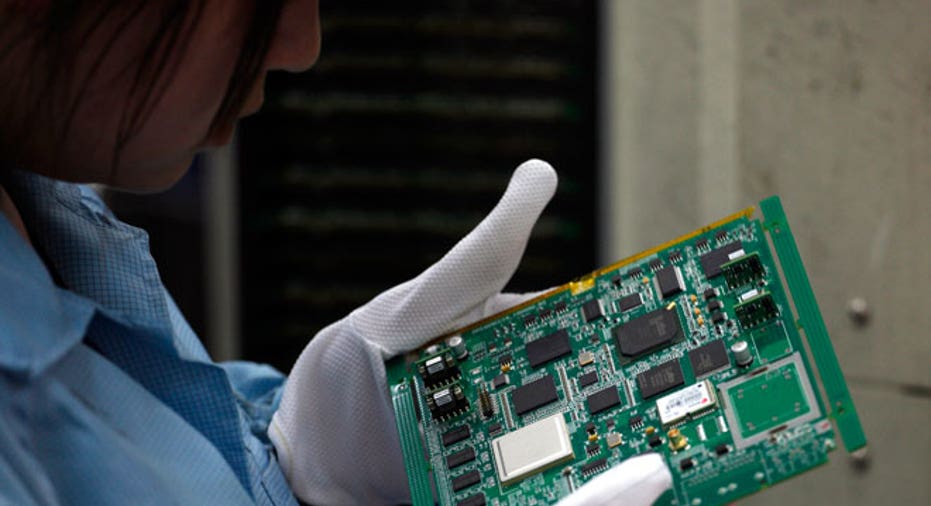Silicon Valley’s Worst-Kept Secret: Ageism

While claims of sexism and racism in Silicon Valley make headlines, it looks like the technology industry faces what may very well be a more legitimate problem: ageism.
According to data from PayScale, which tracks employee compensation and related data, the median employee age across a wide swath of technology companies is about 32. That’s a full 10 years younger than the median age of the U.S. labor force, according to the Bureau of Labor Statistics.
The only career fields with median ages even close to what we’re seeing in the technology sector are bars (age 32), car washes (age 30), clothing stores (age 29), restaurants (age 28), and shoe stores (age 24). And no, I have no idea why shoe store employees are so young. Been wondering about that myself.
Here’s the aforementioned list of technology companies, with median ages in parentheses:
HP (40); IBM (37); Dell (36); Cisco, Oracle, EMC (35); Texas Instruments (34); Adobe (NASDAQ:ADBE), Intel (NASDAQ:INTC), Microsoft (NASDAQ:MSFT), Micron (33); Amazon (NASDAQ:AMZN), Nvidia, Yahoo (32); Apple, Qualcomm (31); eBay, Twitter, Blizzard Entertainment (30); Google, LinkedIn, Salesforce (29); Facebook, Zynga (28); AOL (27).
Writing for Techcrunch in 2010, entrepreneur-turned-academic Vivek Wadhwa said the industry’s preference for young, inexperienced talent “is not something that tech executives publicly admit, because they fear being sued for age discrimination, but everyone knows that this is the way things are.”
In a 2012 New York Times article called “Old Techies Never Die; They Just Can’t Get Hired,” Norman Matloff, a U.C. Davis professor who has long studied the technology industry’s hiring practices, said “workers over 35 regularly face discrimination by technology companies.”
Which begs the question: If workers over 40 are a protected class, then what’s behind what appears to be blatant ageism?
One thing’s for sure; it isn’t a supply problem. Last year, The Atlantic explained that the accepted common wisdom of widespread worker shortages in science and engineering is nothing but a myth. Study after study by respected academic researchers show that we are almost certainly in an oversupply situation.
The obvious answer is that experienced workers make more money. There may be a law against age discrimination, but there’s no law against choosing a qualified candidate over an overqualified one that costs more. That’s what makes age discrimination so notoriously difficult to prove and employment attorneys reluctant to take those cases.
In addition, all the media hype and political correctness over workforce diversity typically favors women and minorities. Software by venture-backed startup Entelo, for example, can filter candidates by gender and ethnicity “to allow employers to develop a more diverse candidate pool,” said CEO Jon Bischke in an email interview.
This increasingly common practice known as diversity recruiting does appear to be working. Contrary to media hyperbole, most technology companies today are actually bending over backwards to diversify their workforces.
Sadly, that presents a real problem for the older crowd because employment is a zero sum game. One candidate gets hired and the rest don’t. Do the math. If minorities and women improve diversity and qualified young candidates mean lower payroll costs, guess who loses? That’s right, the supposedly overqualified older guy or gal.
To make matters worse, there’s no shortage of popular wisdom and dubious studies floating around the blogosphere that wrongly correlate technological capability with youth. That’s nothing but a myth. Just because you can’t simultaneously develop an app while playing a game and texting doesn’t mean you’re over the hill.
There is a silver lining, however. You know all those tech wunderkinds we keep hearing about? They’re actually a pretty rare breed. In reality, entrepreneurship among the millennial age group is on the decline, according to Census Bureau data. Meanwhile, baby boomers are starting companies in record numbers. Who knew?



















